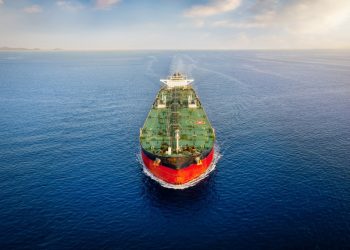In its latest Safety and Shipping Review, Allianz explores the growing risks posed by the shadow fleet: an expanding network of aging, covertly operated tankers involved in illicit oil trade.
Common patters and strategies
Shadow fleet, or dark fleet, tankers illegally trade oil subject to Western sanctions and embargoes. While the shadow fleet initially grew out of the illicit trade in Iranian and Venezuelan oil, it has increased significantly with the imposition of sanctions and the international price cap on Russian oil. Around 80% of Russia’s oil exports are now thought to be shipped on shadow tankers.
While definitions of shadow fleet vessels differ, they are typically older (15+ years), poorly maintained, and hold insufficient or no insurance. Sailing under flags of convenience, they obscure their true ownership and employ various risky tactics to avoid detection, such as switching off automatic identification systems (going dark) and conducting dangerous ship-to-ship transfers in international waters near Russia, Malaysia, Malta, Greece, South Korea, Oman, and the UAE—some of the major hotspots.
As a result, a significant proportion of the world tanker fleet is now operating outside Western jurisdiction, with minimal oversight and little or no insurance.
STS transfers in international waters
Ship-to-ship (STS) transfers, commonly and legally used in the shipping industry to expedite cargo delivery, have become a key strategy for countries like Russia, Venezuela, and Iran to bypass Western sanctions and sustain oil exports. Conducting transshipments in international waters allows tanker operators to conceal the oil’s origin, thereby complicating enforcement and inspections.
Earlier this week, the Panama Maritime Authority (PMA) introduced new regulations aimed at curbing STS oil transfers obscuring the origin of cargo, particularly Russian and Iranian oil.
The shadow fleet in numbers
Since the start of the war in Ukraine, the size of the shadow fleet has exploded. Today, around 17% of the world tanker fleet is believed to belong to the shadow fleet. S&P Global estimates there are approximately 591 shadow tankers trading Russian oil alone, while the Kyiv School of Economics puts the number at around 435. The Centre for Research on Energy and Clean Air (CREA) estimates that an average of three shadow tankers leave Russian ports daily.
Meanwhile, according to Carnagie Endowment, in 2024, data reveals that 735 oil tankers out of a global fleet of 2,849 picked up at least one load from Russian ports, transporting an average of 48 million barrels of oil per day. This number represents about a quarter of the global oil tanker fleet, indicating that a significant portion of the world’s oil shipping industry remains intertwined with Russian crude exports.
According to Gibson, nearly 63% of tankers built in 2009 or earlier are now engaged in grey fleet activity, often trading sanctioned goods from countries like Iran, Venezuela, and Russia. Between January and August 2024, CREA reported a 277% increase in shadow tanker activity in the Danish Straits compared to the same period in 2022.
The shadow fleet is now estimated to be close to 600 vessels and growing. Although recent sanctions are making it harder for these vessels to trade, the shadow fleet continues to pose a serious risk to maritime safety and the environment, as many are likely to be older vessels that are poorly maintained and inadequately insured,
… said Captain Nitin Chopra, Senior Marine Risk Consultant, Allianz Commercial.
Shadow fleet incidents: examples
Shadow fleet vessels have been involved in more than 50 incidents worldwide, including fires, engine failures, collisions, loss of steerage, and oil spills:
- May 1, 2023: The Gabon-flagged shadow vessel Pablo exploded in busy waters off the coast of Malaysia, just outside Singapore’s crowded waters.
- October 2023: The 26-year-old Cameroon-flagged Turba, transporting contraband Russian oil, was found adrift off the coast of Indonesia. Around a year earlier, the Young Yong, a vessel sanctioned by the US, ran aground in the same area, requiring a difficult (but successful) Indonesian Navy refloating mission.
- Early December 2023: The Liberty, a 23-year-old tanker flagged in Cameroon, ran aground in the Strait of Malacca.
- March 2024: The shadow fleet tanker Andromeda Star, carrying Russian oil, collided off the northern tip of Denmark.
- May 2024: The Comoros Islands-flagged shadow tanker Hera I, transporting crude oil from Novorossiysk to India via the Suez Canal, suffered an engine failure in the Dardanelles, forcing the southbound lane to close for three hours.
- July 19, 2024: The Singapore-flagged Hafnia Nile and the São Tomé and Príncipe-flagged Ceres I collided off the coast of Malaysia, causing both vessels to catch fire.































































